-
Posts
664 -
Joined
-
Last visited
Content Type
Profiles
Forums
Articles
Gallery
Downloads
Events
Posts posted by DanielC
-
-
This is what I do when I encounter failures in steel making. I always, always, always pick myself back up and keep going.
New 5.5 pound puck, it is in the kiln roasting right now and the resulting metallographic structure will tell me more about carbon content, but according to estimations it can be 1.4% C at the lowest, and 1.7%C at the highest.
Broke the 1st use crucible though, oh well.
-
So found out there was a void in the center of the puck which led to a long cold shut. I decided to skip "killing" the melt this previous time with my go to method and instead tried to use Calcium Carbonate. Apparently not enough. Sucks, but its part of the game. 18 hours of forging under the powerhammer, 80# of propane tons figure it out though.
I had just finished coarsening the cementite and started to stretch it out too. Oh well.
Time for a new melt tonight. An old puck and some chunks of this recently worked bar. Should get me around 1.6-1.7% C.
-
Hmm hard to tell. Years of conversations with various people.
-
Ah thought you were talking to me because you did send me a pm and I'm not sure if I responded.
-
Apologies SLAG, I'm in and out. Very busy. I will get back to you on it soon.
-
Social media is a beautiful thing. Ann, Ric and pretty much the whole community talk, argue and present data, arguments for or against and examples all the time.
The best wootz maker in the world resides in Finland, and it is his methods that I borrow from through a friend who took a class with him.
Tbh, thanks to social media I am close friends with most of the steelmaking giants. Both professionally and personally.
I am even friends with one of Al's students and friend and he helps me make heads or tails of some things.
-
Most of us just use the term Wootz because it is shorter, and most have realized that the only thing differentiating between modern crucible steels and historic wootz is the melting process, getting the alloying agents in the billet to form a good pattern. However I typically reserve the term for the better patterns and not the inferior ones I've seen produced by several as of late.
The patterns often associated with historic wootz are obtained irrespective of melting procedure
A pattern in the end is dictated by chemistry, melting temp/time, time of solidification, roasting, forging procedure and heat treatment.
There are many forms of crucible steel out there that wildly change one of those key things to form a different pattern, such as bulat.
Modern purveyors of crucible steel have finally gone a little further than Pendray, and the field is getting smarter by the day.
-
I have it stored in my phone. Her opinion diverges from Verhoeven. It's difficult to make heads or tails out of who may be right, except for the fact that she doesnt make or forge crucible steel and Verhoeven worked closely with Pendray who did.
-
Thanks. Given that it did water, the carbon content was indeed 1.3ish.
Even with a power hammer, crucible steel is rough. Easy, easy, easy to mess up. Really hard to sync everything together just right.
It was indeed crucible steel and Ric Furrers special that got me into smithing period.
The pattern will become more bold and pronounced the further I go as long as i dont screw it up. As of right now that etched section is still over an inch thick. The pattern gets better as you gradually get closer to blade thickness.
-
Was on the verge of chucking this bar today because it was not looking good under the scope. Decarb from the soak may have left a carbon content gradient that needed to be ground through revealing the true nature.
As can be seen in the picture below. The amount of spheroidized cementite looks very low in concentration to be 1.3-1.4% to me. This took roughly 6 hours to turn into a short oblong bar.
This is the picture (directly below) that made me feel like there just wasnt enough cementite.
So here I am today, about to give up on the bar. Assuming I either cooked all the carbon out in the roasting by not protecting the Ingot well enough or I overestimated carbon content. Either way, after another 3-4 hours of forging, I felt the bar finally give under the hammer and feel like a beautiful piece of steel and not a hunk of cast iron.
The watering pattern at the edge gave me a sigh of relief. Whew. Lucky me, the bar weighs over 4 pounds. Lots of blades if all remains well.
-
So, I'm working on another run of crucible in between commissions for sanity sake. This one is a little lower C than I've grown accustomed to, but hope it survives into the end.
It was melted and weighed out to 4.5 pounds. It was then roasted for ~22 hours and am poised to start the forging process.
-
-
Thanks Frosty!
-
Ill need to search for the picture resize option in the forum tools. If it isnt there, I simply cannot post pictures any more because it is too exhaustive to do it on my phone.
-
-
Good stuff, and good luck. Coticule are fine stones for sharpening. Not the greatest mud generators, but are still nice.
And dangit, if I didnt already hit the quote function on accident. Habit

-
The closest thing are synthetic water stones, and even then it's a noticeably different look, and if I remember correctly, they don't leave the jacket iron/steel a reflective surface at one angle, but I could be wrong. Either way, you know when the polish was done with synthetics and when it was done with naturals.
These are purely stone polish. I dont let etchants come anywhere close to my steels when I commit 10-20 hours polishing a single blade.
It's also really hard to give naturals a grit number, but in the stone world, these finishes are in the 6-8k range.
-
Just wanted to update that 2 years later, it still sits in slumber

Life has not allowed me to allocate the proper finances to build a new shop for it yet.
-
I do take my own photos Frosty. I have practiced a lot of this for my IG. Where selling a knife can sometimes be dictated by how well a photo of it is taken.
And yes, this is freehand. I only use a work rest to profile a blade some pre-HT, and then toss it after that. I dont mess with jigs.
Thank you all for the kind words.
Here is another I just recently mostly finished with polish. Just a little touch up left. This one is W2 and 1018. I used a curious looking lightbulb in the background to play with the reflection.
The obvious contrast and boldness in one angle and reflective mirror in another angle is a staple of stone polish.
-
My bread and butter is traditional construction sanmai kitchen knives. Particularly Gyuto. Although I make nimai Deba, yanagiba, usuba, etc...
This is a recent sanmai gyuto made with a 1095 core and 1018 jacket. The finish is kuroichi that has a forged finish flat and a wide bevel that is polished for kasumi (hazy) using natural japanese stones.
I have quite a massive collection of japanese natural stones for full polishing progressions of kitchen knives, tools, razors, and even japanese swords. When I make this style of knife I typically polish it on stones, which brings out the contrast between both steels without the use of etchants. It's very skill and stone dependant to pull off. I've trained stone polish like this for nearly 4 years.
This particular Gyuto is what's considered a work horse. It's a special category of Japanese chef knife popularized by the famous kitchen knife Smith in Japan, Kiyoshi Kato. It is his methods that I have trained for many years now on traditional forgings of sanmai kitchen knives.
This knife also has hamaguri geometry. Which is a clamshell shape, somewhat like convex, but a lot more complex and difficult to grind and polish successfully.
The handle is desert ironwood, stabilized maple and titanium. Extra long to both balance the heftier knife at the pinch grip, and because the customer wanted it that way. I have been making these for kitchen knife collectors and chefs around the world.
And a sample of my stones. There is around $12k sitting right there as it is. Not a cheap endeavour, but one that is very satisfying for both me and my customer base.
-
19 minutes ago, ThomasPowers said:
Are you on the archeological Metallurgy mailing list?
I'm afraid not.
-
It is/was Don Foggs site and devoid of all the fluff found on some of the other blade forums. However, the forum format of exchanging information is quite a bit more dead than it ever has been and most of us converse through social media.
I've been talking to a few archaeologists. One that studies medieval weaponry and another that studies ancient metals and their uses. Both are friends, and both have been following my work for some years now apparently. I would share their names, but I am not quite sure that is appropriate given this stage in our plans, idk. I'm poised to write an academic paper (as a non-academic) with one and create a database with the other. Not sure if divulging that information publicly would be wise.
-
I have a website, but I do not go in depth on the specifics.
When I bring it out of the heat to weld, much of the clay melts as it contains a heavy amount of silica. The power hammer drives it away. If any gets trapped, which I'm sure it does, it is further driven out in the folding process. I have stored a lot of japanese forging footage and converse with a few Japanese swordsmiths (with broken japanese and translators, and vice versa as a few know broken english). They are not always forthcoming, but they are typically happy to show off steps in the process. Doing it long enough I know exactly where to look if I have a question about something, and with video footage going back decades to present day, along with their candid photos, the process is pretty well mapped out.
I will say that part of the mixture sinters to the outside as opposed to melting and I do indeed scrape that off as soon as it comes out.
-
Np, I am an iron smelter and iron melter

Also, the thread title is wrong, this is by far not my first experience with these types of steels lol


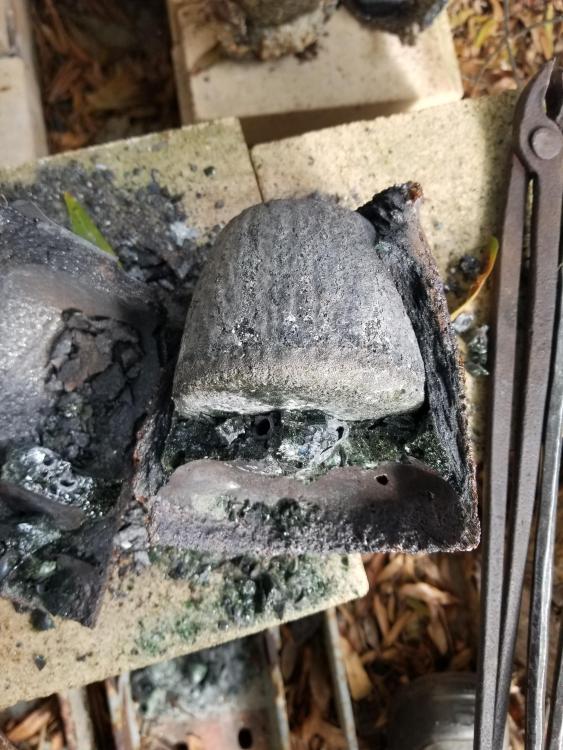
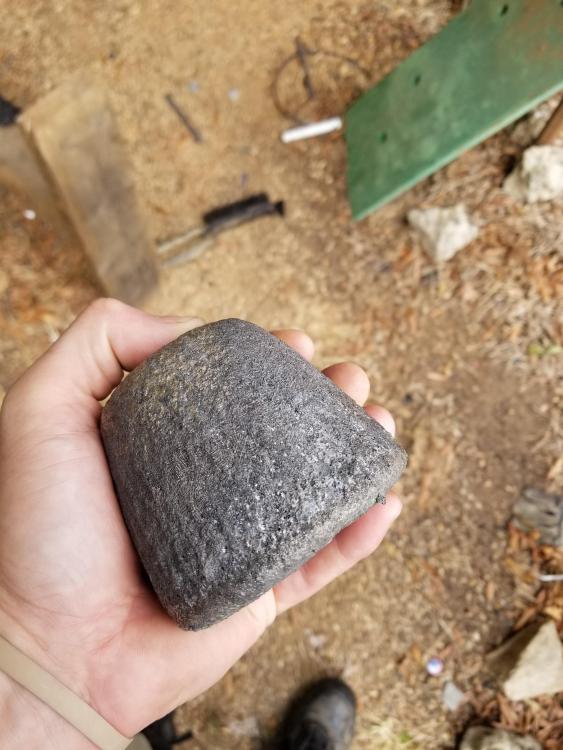
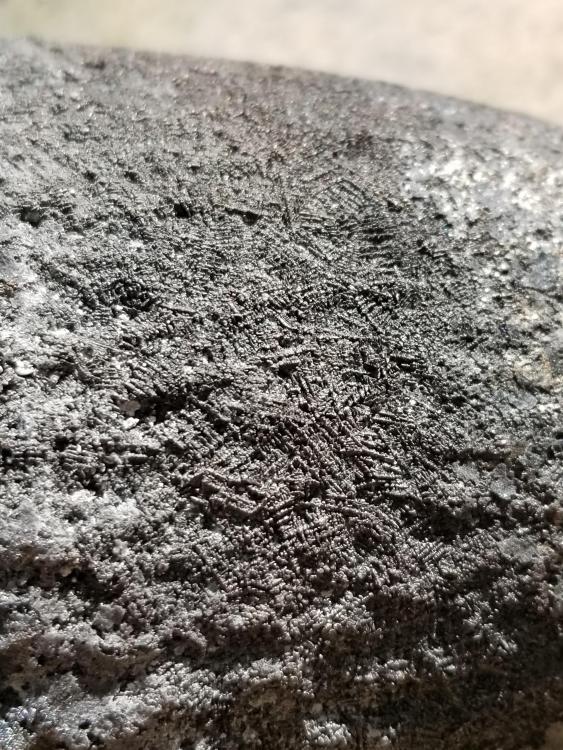
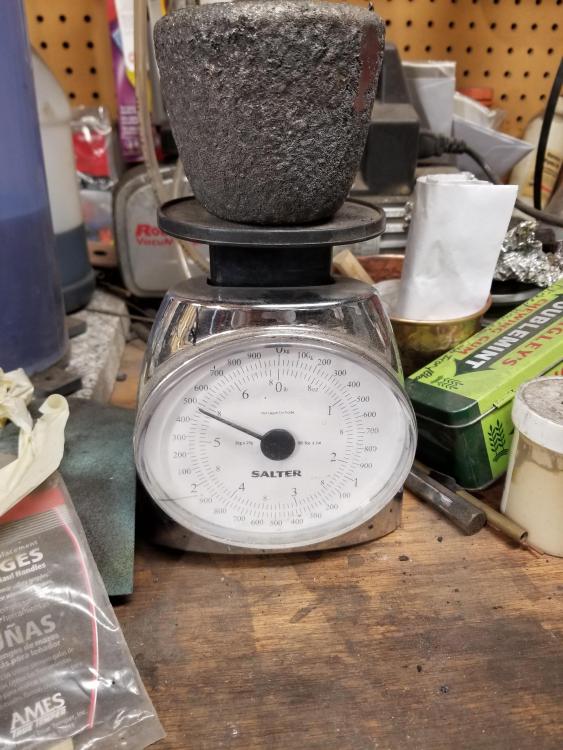
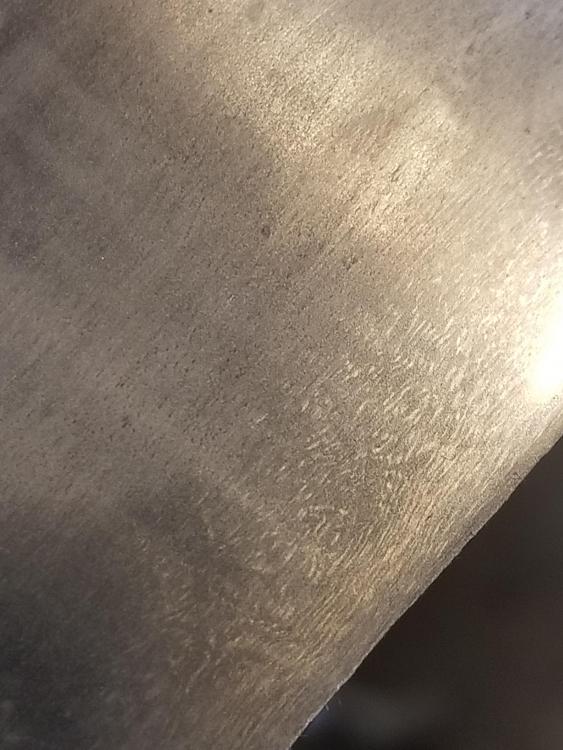
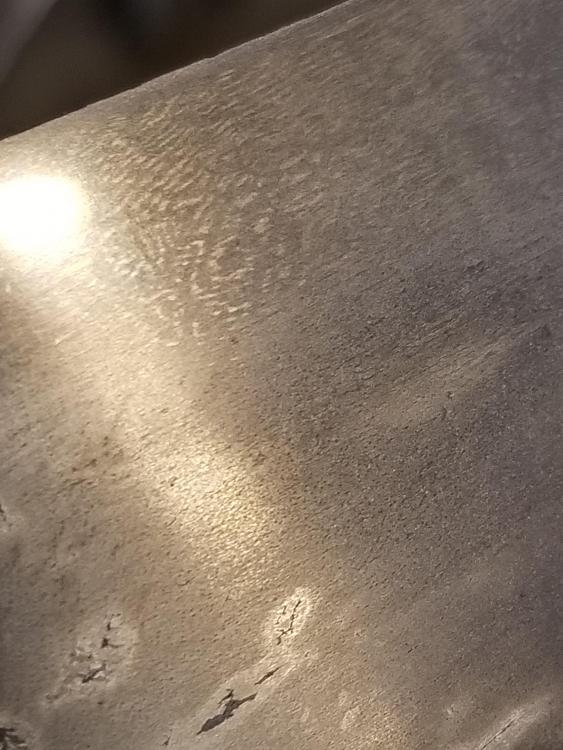
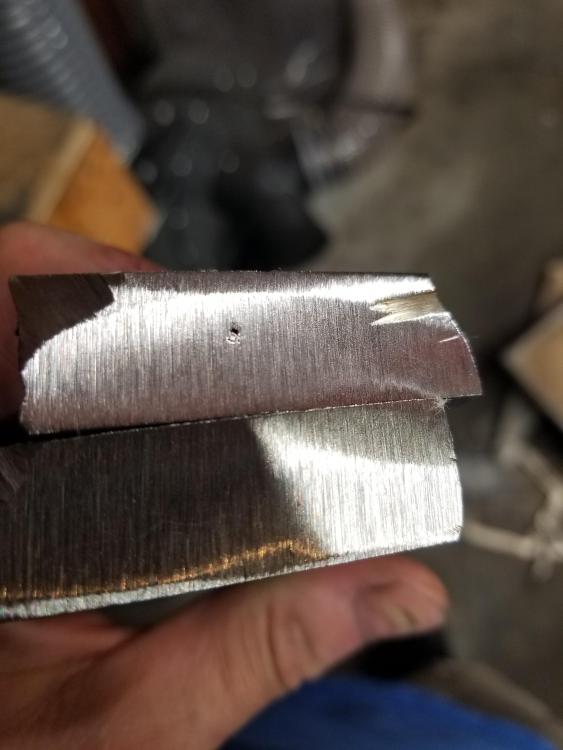
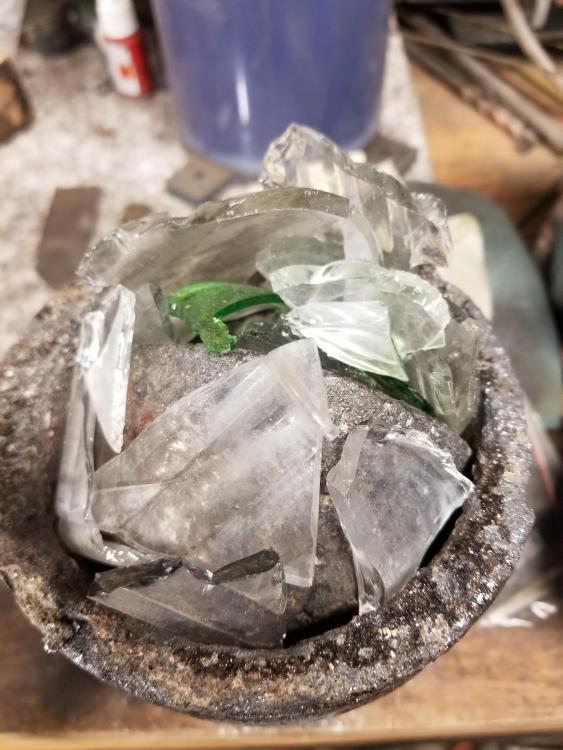
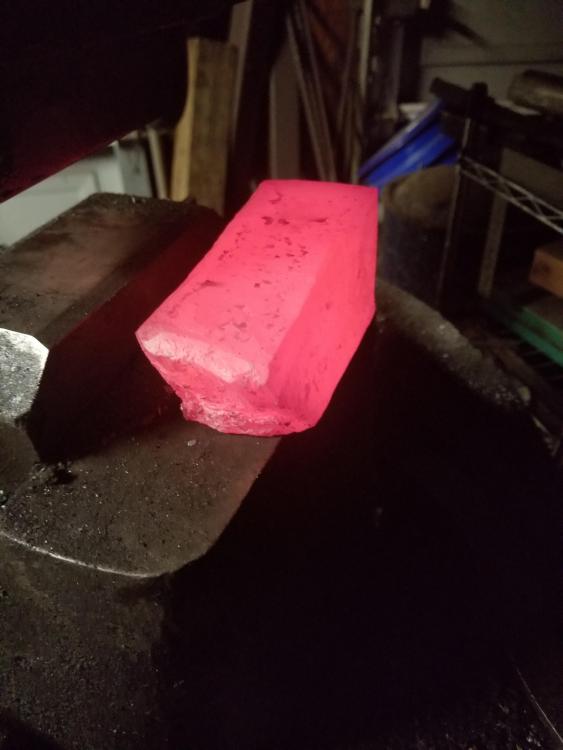
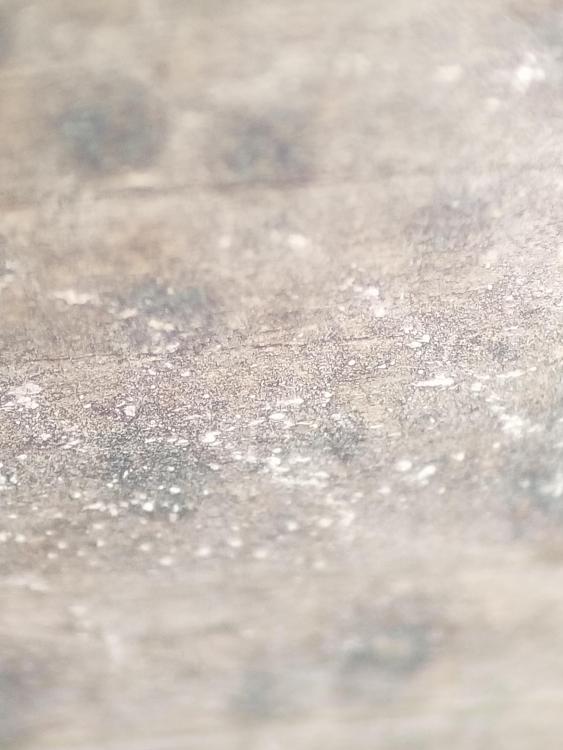
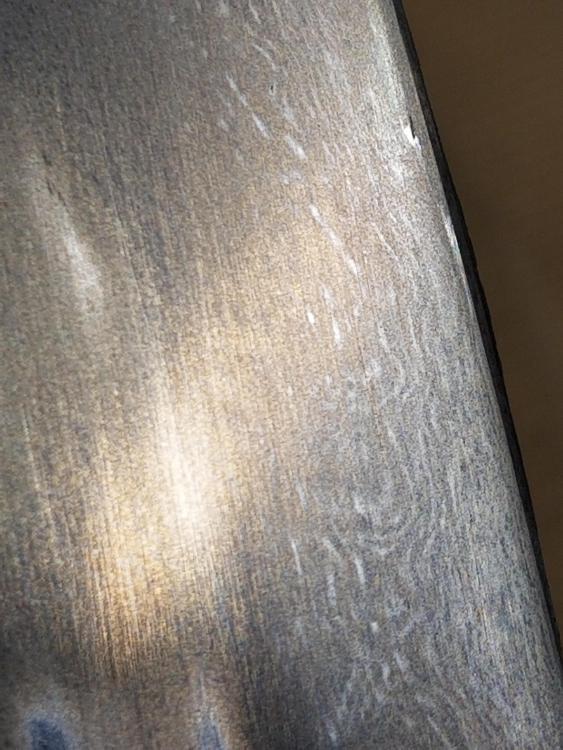
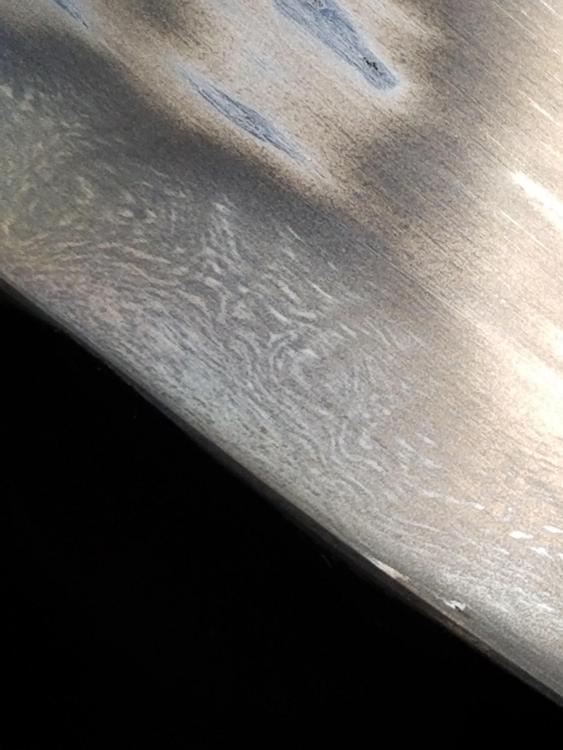
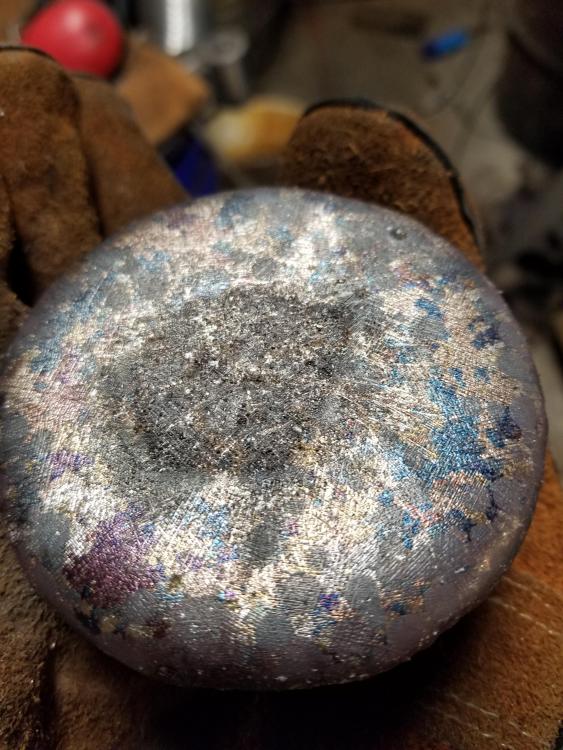
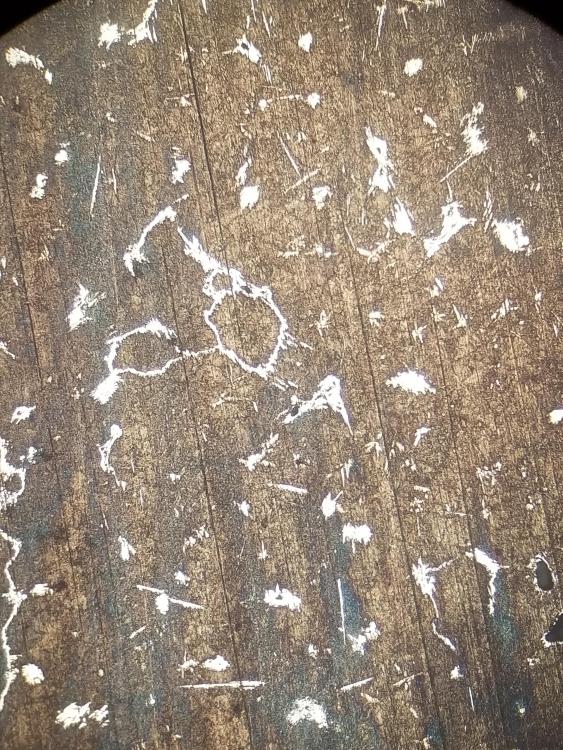
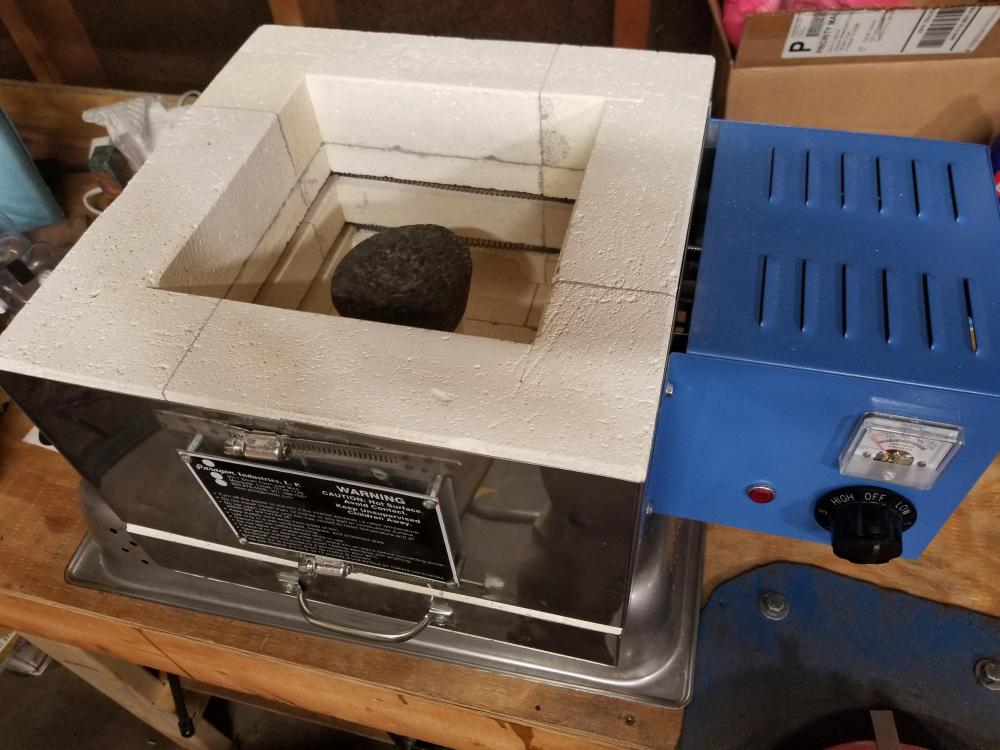
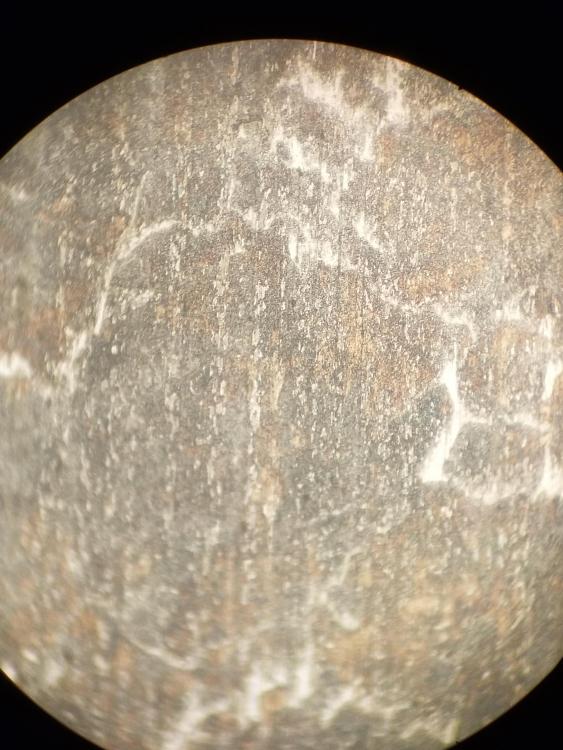
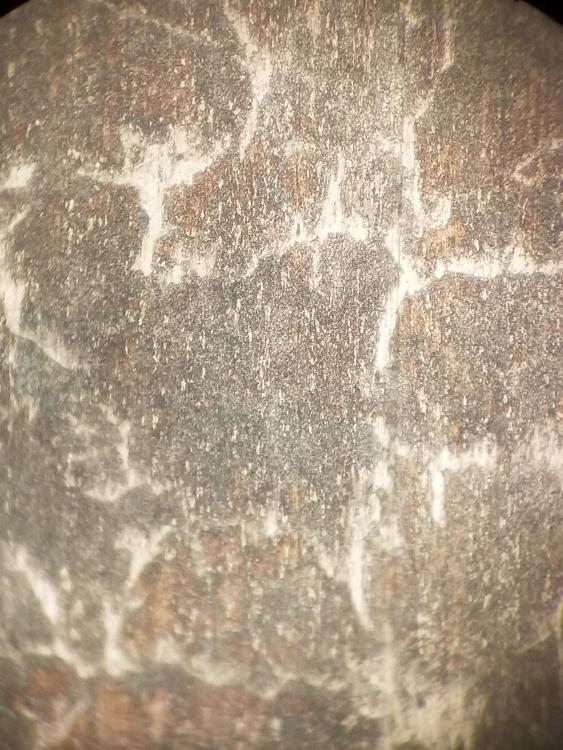
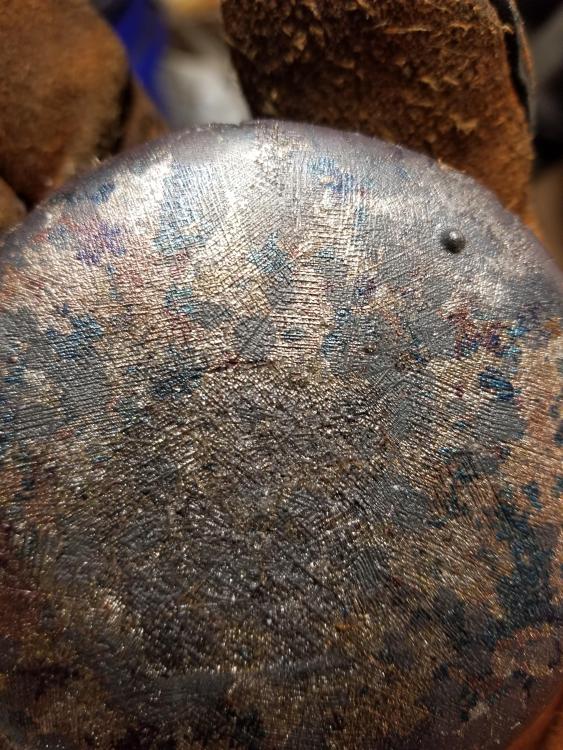
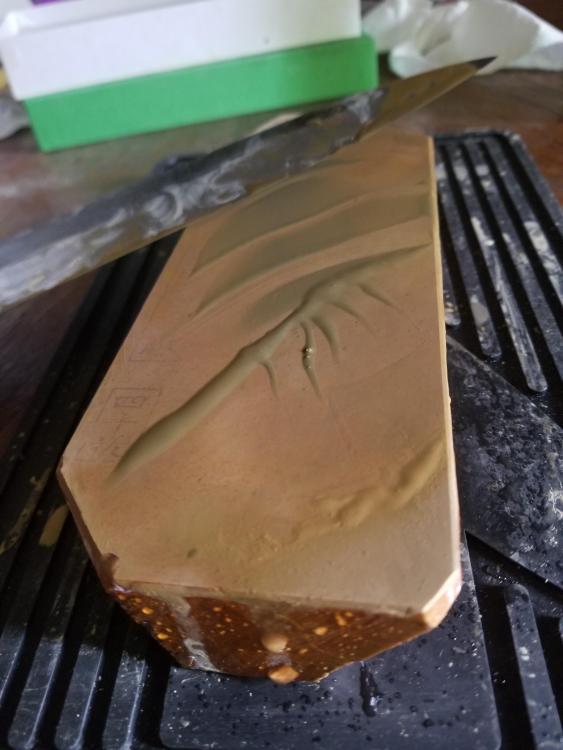
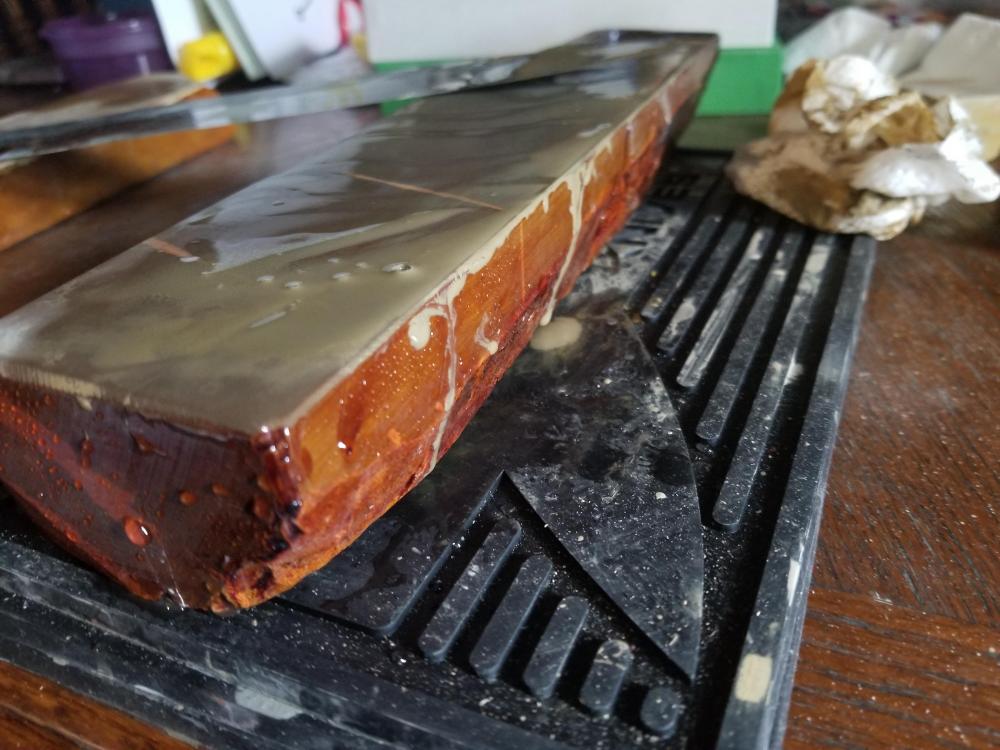
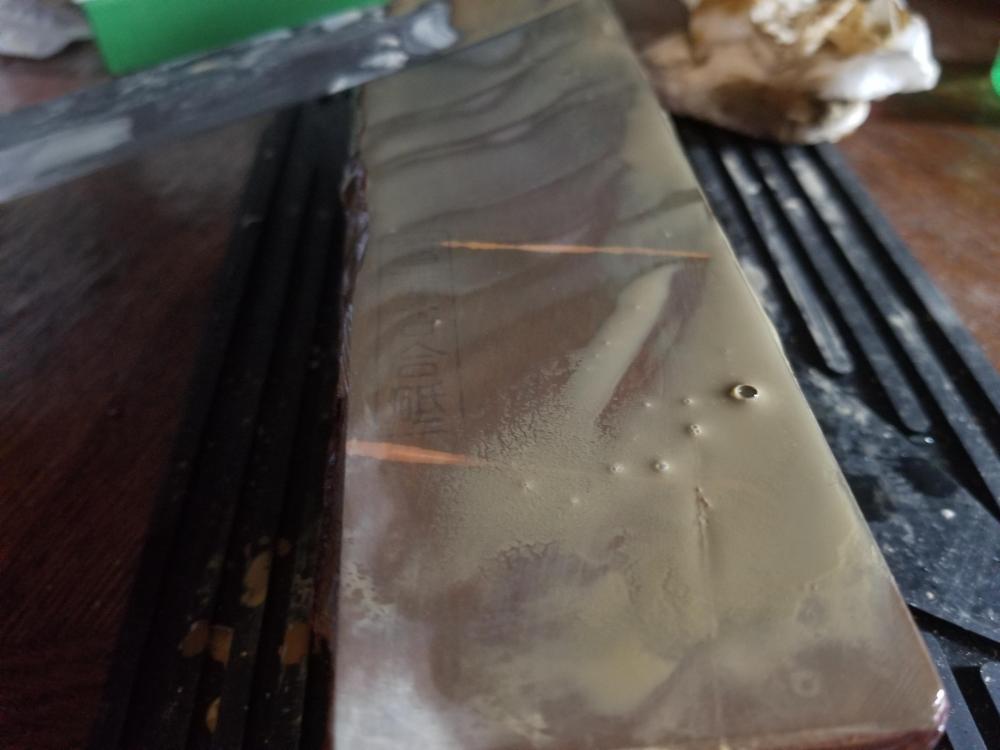
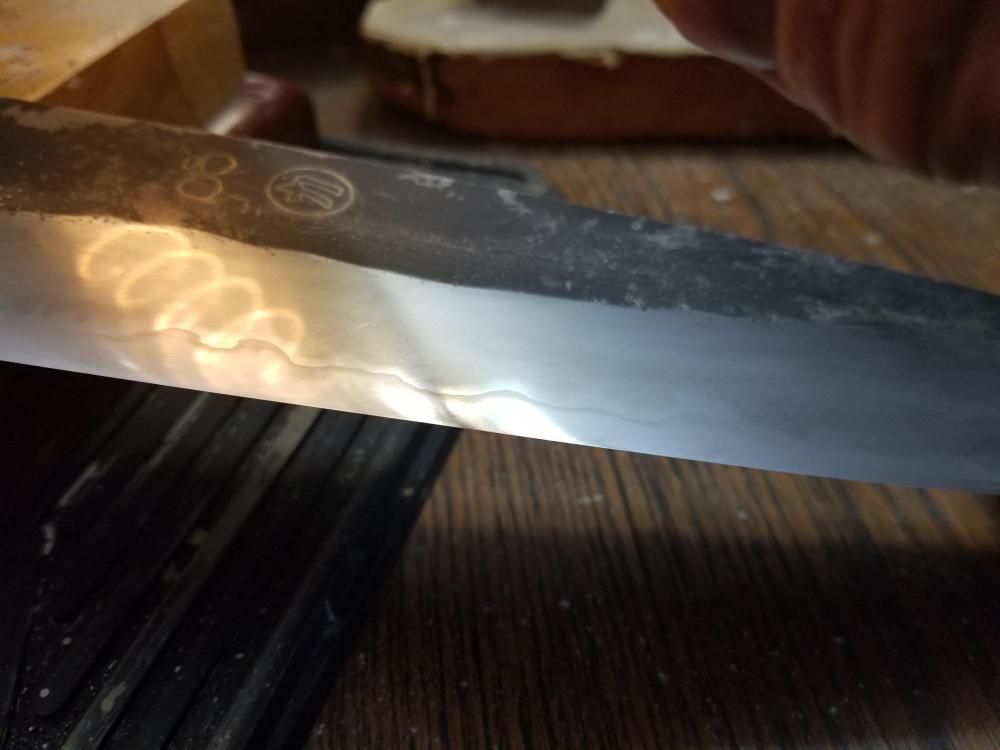
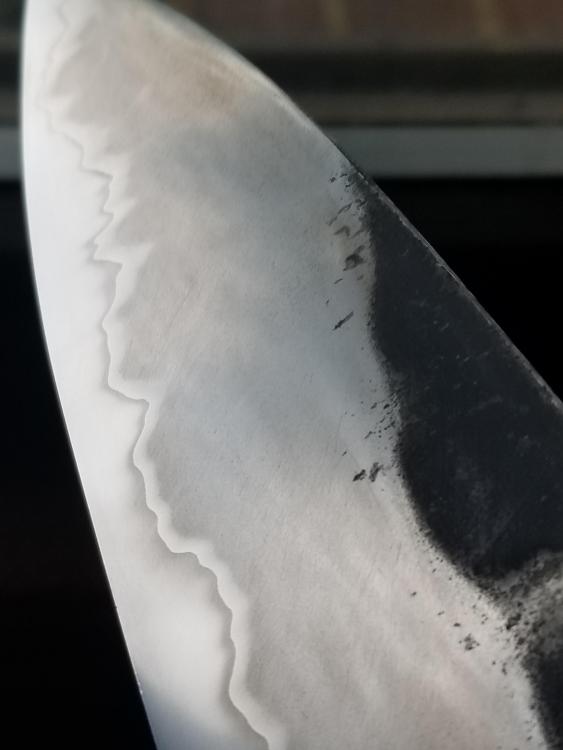
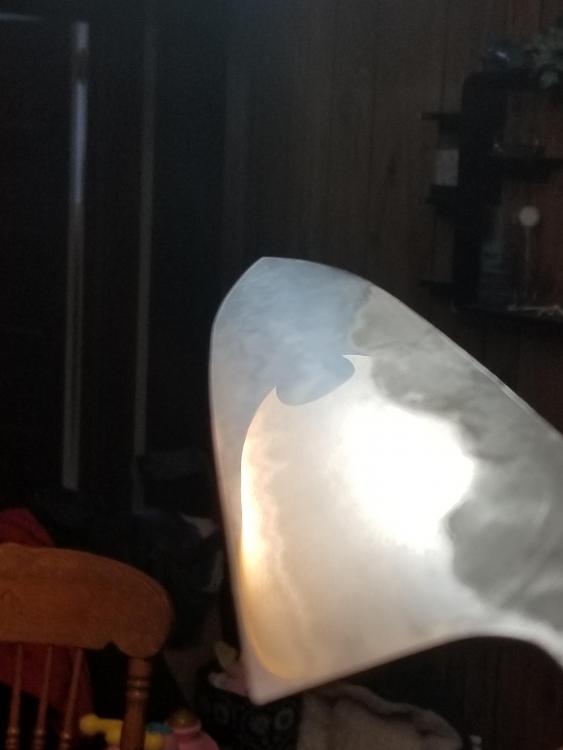
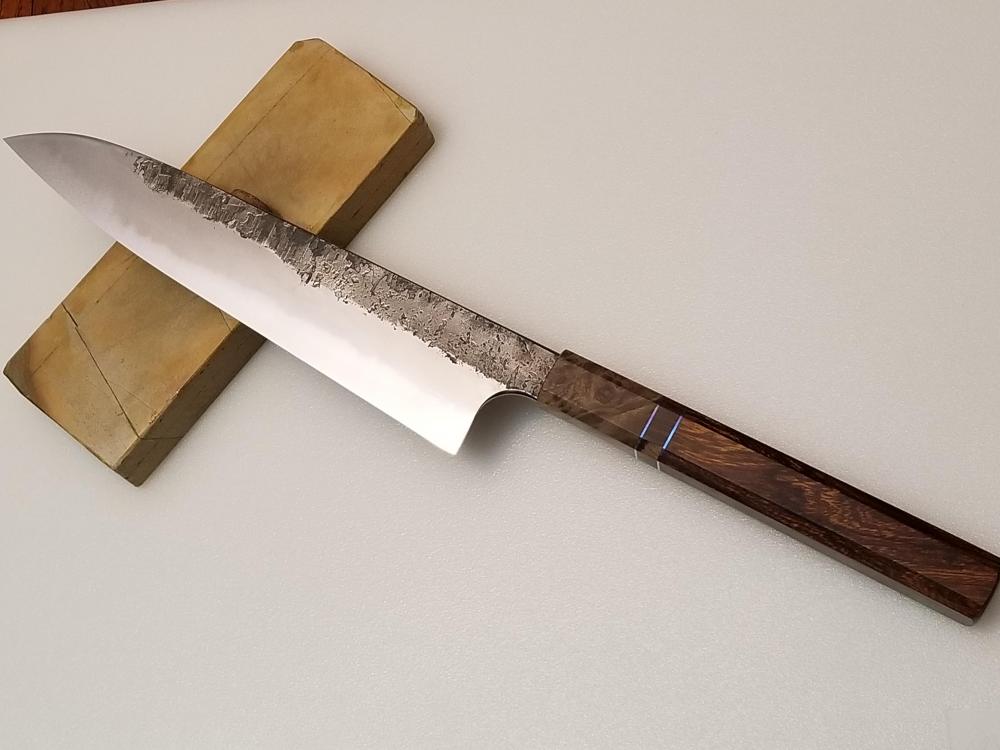
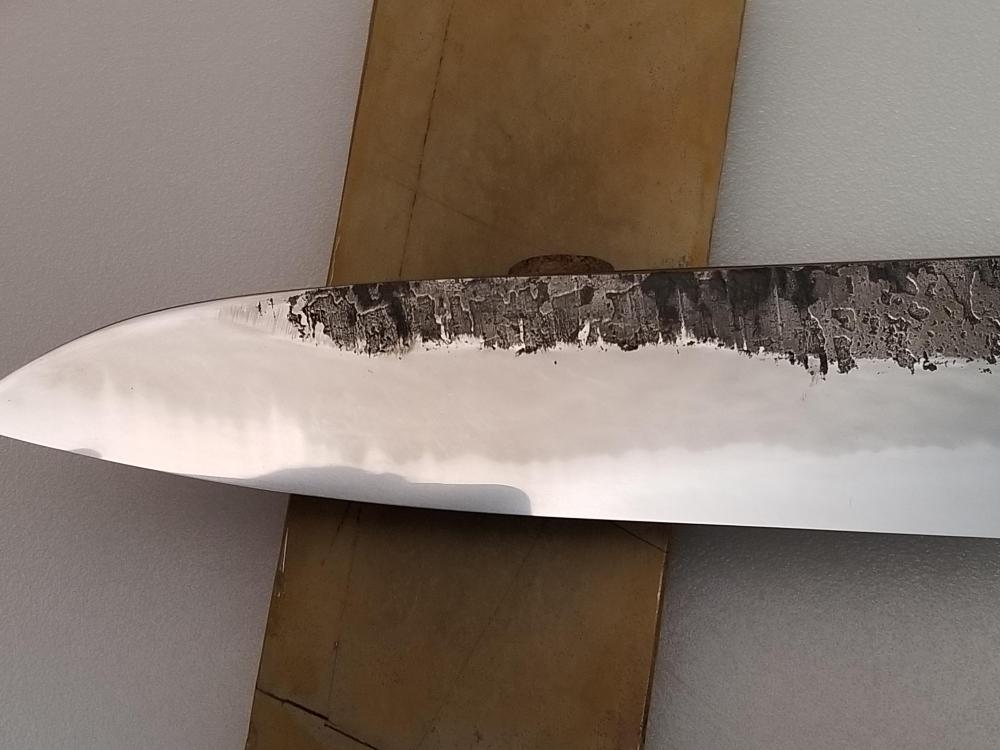
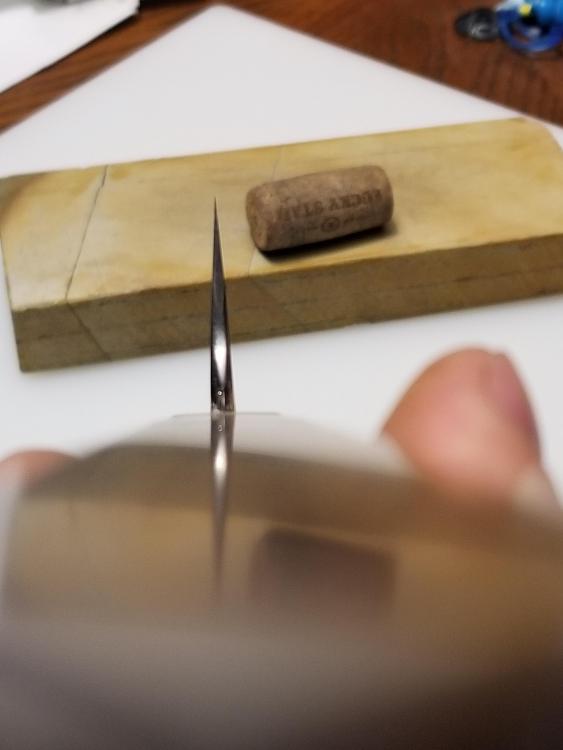
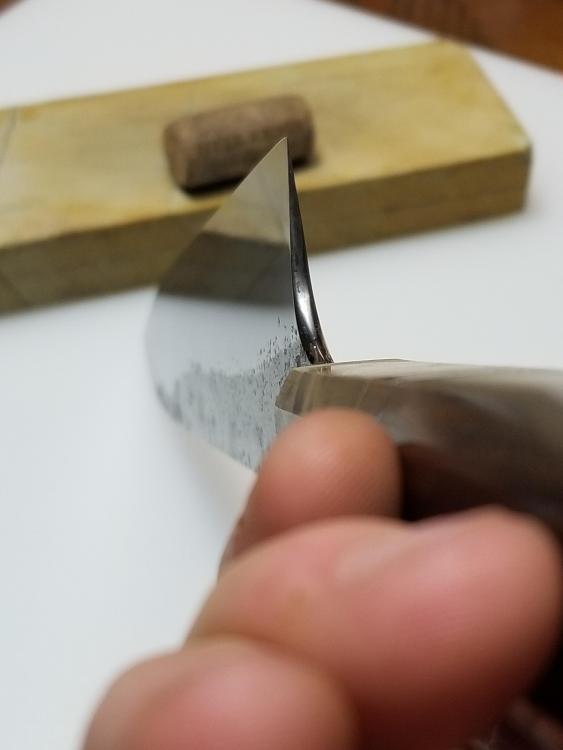
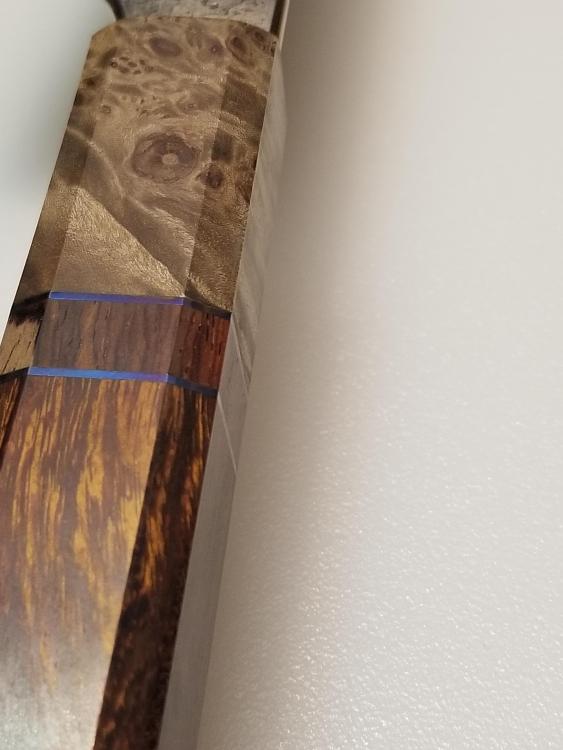
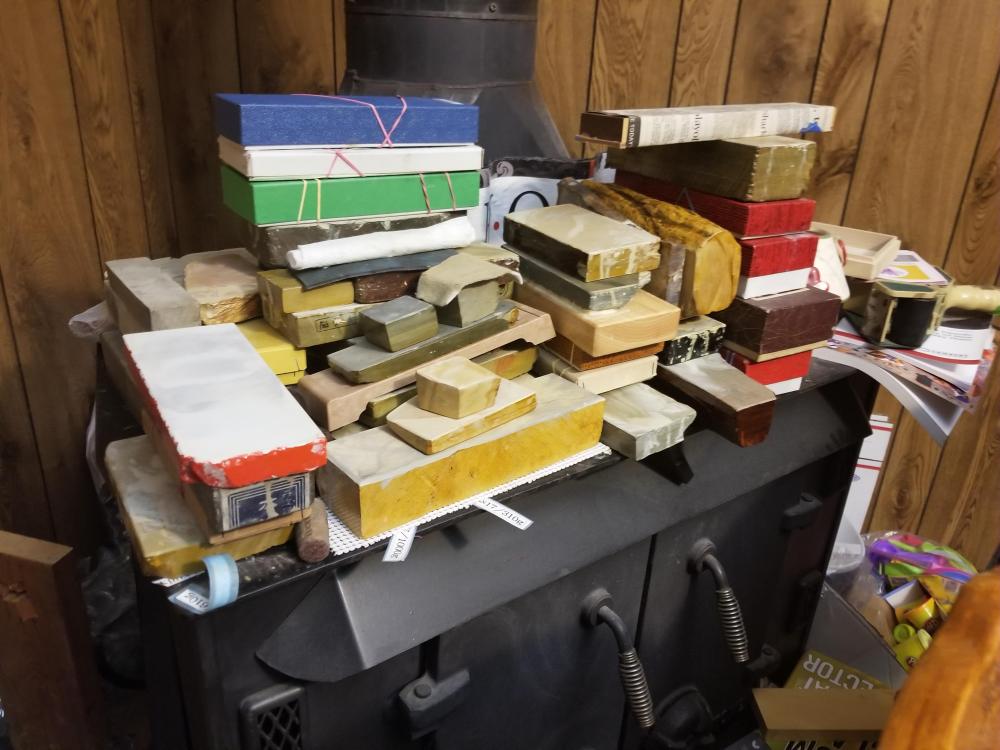
1.3-1.4% C Crucible Steel
in Smelting, Melting, Foundry, and Casting
Posted
And after a roast, I have what appears to be in the upper atmosphere. ~1.7% C